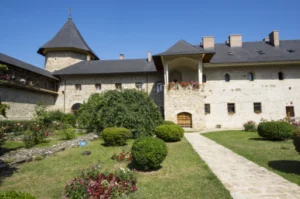San Antonio Faces New Water Restrictions amid Ongoing Drought
San Antonio, famous for its vibrant culture and delicious Tex-Mex cuisine, is currently grappling with significant water challenges. The San Antonio Water System (SAWS), the largest water and sewage utility in Bexar County, has announced new watering restrictions as the level of the Edwards Aquifer has dipped to 640 feet. This situation is being taken seriously, and the community is urged to adapt to changes in water usage practices.
Understanding Stage 3 Restrictions
According to Nathan Riggs, who has dedicated nearly two decades of his work to SAWS, “Stage 3 is serious.” Nathan, who has served as the drought enforcement coordinator, leads a team responsible for monitoring irrigation practices throughout the city. His typical day includes driving around, checking to ensure that homeowners are watering their lawns according to the new guidelines.
“We look for sprinklers running,” Riggs shared. “Then we check the address to confirm it’s the right watering day.” The new rules allow residents to water once a week during specified hours: from 5 to 10 a.m. and 9 p.m. to midnight. This measure is intended to help manage the demand on the water system more effectively.
Patrolling for Compliance
SAWS has been quite proactive in making sure residents stick to these new guidelines. The patrol staff operates between 7 p.m. and 10 a.m., and Riggs noted that most violations tend to occur at night. “It’s not uncommon for us to see sprinklers running at three in the morning,” he explained. To tackle misconceptions, Riggs clarified that they have photographic evidence of these violations, which they can share with homeowners who might think they were wrongly accused.
Conservation Efforts
In addition to the new watering hours, SAWS has introduced a high usage surcharge. If residential customers use more than 20,000 gallons during this stage, an additional fee will be added to their bill for every 1,000 gallons they go over that limit. This is part of an overall effort to encourage water conservation.
Riggs reported that despite the drought conditions, overall water usage has decreased compared to previous summers, with only 2,900 violations and 4,700 warnings issued so far. They find educational outreach more effective than punitive measures. “We would much rather educate our customers than issue violations,” he stated.
Penalty for Noncompliance
If homeowners do receive a violation, they could face fines ranging from <$b>137 to $500, depending on the offense. However, there’s a silver lining for first-time offenders. They can take an online educational course about water conservation to have their charge waived, which Nathan referred to as “defensive watering.”
The Road Ahead
This is the first time that SAWS has implemented Stage 3 restrictions, emphasizing the critical need for conservation efforts. Riggs noted that the drought cannot be simply washed away with a few showers. “The drought is over when the aquifer says it’s over,” he remarked. The community’s cooperation in adhering to these guidelines will play a vital role in sustaining water resources.
As San Antonio faces yet another hurdle in its fight against drought, residents are called upon to prioritize water conservation. Together, they can help protect this precious resource for future generations.








